Updated: 13-Jun-2022
Russian designer Vladimir Yakovlyevich Klimov started working with A.A. Mikulin on the development of the M-17 engine, which was a BMW VI manufactured under license.

“M-17”
In 1928 he was sent to France to acquire 200 Gnome-Rhone Jupiter 9 engines and at the same time he acquired a license to build these engines in Russia. In 1930 the first engines were built. These were the 9Ab models that would be the M-22. After that they made the 9Ag engines that were used on training aircraft. It is also known that they manufactured the Gnome-Rhone 14K and 14N engines.
-Already in 1933 the license for the Hispano Suiza 12-cylinder Vee-engine is obtained, the “Y” models of which variants and developments would be made. In Russia they would be the M-100, M-103, M-105, M- 106, M-107, M-108 and M-109. In total about 129,000 engines of these types were manufactured until 1945.
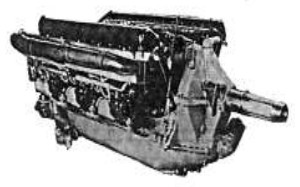
“VK-105”
-The GAZ factories where the Klimov engines were produced were in Leningrad, Moscow, Svrolensko, Rybinsk and Breistovsk.
-The 1933 M-100 model (HS12Y) gave way to the 860 CV M-100A from 1935 and in 1939 to the 1100 CV M-100PN.
-The letter "M" belonged to the official designation (see chapter "M-"). In the year 1943 all engines produced in this factory were changed to "VK" (Vladimir Klimov) by a government decree. For example the VK-105 was the M-105 as well.
-The M-103 (VK-103) of 1937 gave 860 CV. The M-103A of 1939 reached 960 CV with a two-speed supercharger.
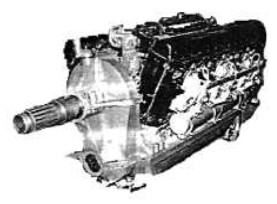
“VK-105P”
-The VK-105 (of the Yak-3) gave around 1,270 CV, although the P and PA models gave less: 1100 CV. They were manufactured from 1939.
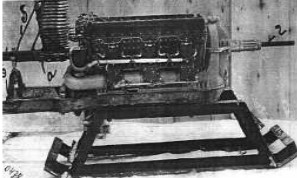
“M-105P”
-Above we show a curious photo of an M-105P “cannon engine” on its driving support of the snow-ski type.
-The VK-105F version was intended for the Yak-9. The VK-105PF (M-105PF) gave a power of 1,240 CV, and it is in 1942 when the VK-105PD appears with a Dollezhall supercharger.

“VK-105PF”
-The M-106 I engine of 1941 remained as a prototype. It had a single-speed compressor and gave 1,350 CV. Same as the M-106 P.
-The M-107A rose to 1,700 CV of power, with four valves per cylinder, similar to the HS89-12Z engines that were also manufactured in Barcelona for Hispanic Aviation.
-The VK-107 PD version had a Dollezhall supercharger and the VK-107 B had water injection to deliver more power.
-A VK-107R was installed on the I-250 as part of an "accelerator" system.
-The VK-108 and VK-109, with 1,850 and 2,100 CV, did not go into production remaining as prototypes.
-From the HS-12Y they made a Diesel version that was used in tanks T-34 and T-54, with reference W-2.
-The VK-120 (M-120) was an attempt to join three VK-103-type V-engines around a single crankcase, that is, one engine every 120°. It had a single crankshaft and was planned for more than 2,000 CV.
-From the year 1945, especially GAZ 45 and GAZ 117, Klimov's OKB office is commissioned to enter the era of reaction.
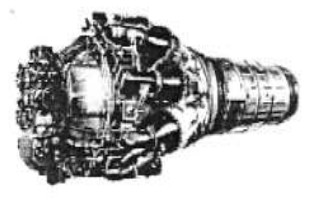
“VK-1”
-He already has Isotov by his side. From the Derwent that they received from RR they made the RD-50 and RD-500 and from the RR Nene they also made the RD-45 (VK-1), both clearly based on these British engines.

“Klimov VK-1, cutaway”
-However, the VK-1 gives a higher percentage of airflow, about 8 kg/s more.
-And this without hardly varying the outer measurements. Its inner parts were continually redesigned. We would see them in the MiG-15, MiG-15 bis and UTI.
-The VK-1A that delivered a greater thrust was mounted on the MiG-17, Il-28.
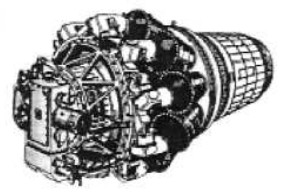
“VK-1A”
-And the VK-1F, which had an afterburner was mounted on other versions of the MiG-17. It delivered 7,452 lbf of thrust.
-These engines were built in China as WP-5 (A, B, C and D) according to their equivalent of the VK-1.

“VK-1F”
-It is known that the VK-2 was a newly designed turboprop with an 8-stage compressor, 7 combustion chambers and 2 turbines.
-The VK-3 also was a turboprop, and from this engine came the VK-7, a derivative with 3,040 Kgf of thrust and it was used on the MiG-19 and Hindustan HF-24.
-The VK-5 (M-205) gave 8,188 lbf of thrust.
-At the same time the engines of V. Klimov became known as “M” or “RD”.

“Klimov at the MAE in Paris”
-The VK-5 that also had an afterburner we can see below. It is the VK-5F.
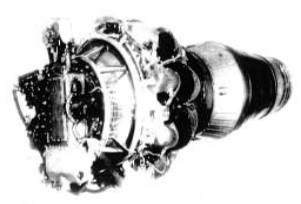
“VK-5 with afterburner (VK-5F)”
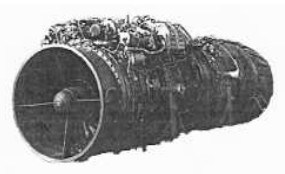
“RD-33”
-The RD-33 is a turbojet that Klimov designed together with Isotov in 1968. It ran for the first time in 1972 and was mass produced from 1981 for the MiG-29.
-It delivered 11,240 lbf dry and 18,300 lbf with afterburner.
-It is a by-pass jet with which an important mass of air “surrounds” the engine and arrives “fresh” to the afterburner.
-These aircraft are fitted with a GTDE-117 APU of the same brand. This is a small turbine that is used to start the RD-33 and the Lyulka AL-31.
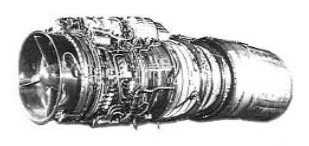
“RD-33”
-Because of the design requirements of the MiG-29, all accessories were on top of the engine.

“RD-33, Isotov design”
-There were other versions such as the RD-33K (MiG-29K and M) with 19,400 lbf or the RD-33N, which had the accessories in normal position, under the engine. They were used to upgrade other aircraft such as the MiG-21.
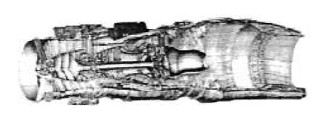
“RD-33N”
-Very similar to this engine is the RD-93, also with accessories located below. It is built in China, under license by LMC.
-The SMR-95 that is built by Aerosud-Marvol, is another version of the RD-33.
-The Klimov R126-300 is another engine that has been mounted on the Tu-324.
-More interesting is the RD-133 with vectored thrust, having an exhaust nozzle that is adjustable by hydro-mechanical mechanisms.
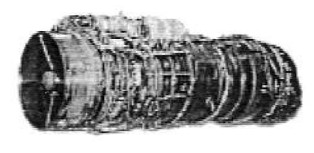
“RD-133”
-The RD-133 can be installed on airplanes that use the RD-33 because it has the same dimensions.
-The RD-333, of the same family as the RD-33 are distinguished by their rectangular nozzle.
-They are known as 5th generation Klimov engines. Maybe for the MiG-35.
-The 4th generation Klimov VKS-5 (RD-43) is similar to the previous RD-33 with 11,500 lbf.
-A developed version of this engine is the VKS-10.
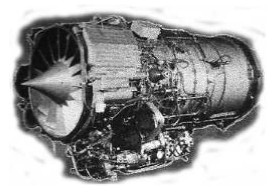
“RD-35”
-The RD-35 is a smaller turbojet with 2,200 Kgf of thrust, and is based on the DV-2. It is designed to power the Slovak L-39, and that is manufactured by PSLM (Povazske Strojane).
-Klimov manufactured the RD-35 in collaboration with the said Slovak company.
-In Russia they are mounted on the Yak-130, twin-engine aircraft.

“RD-60A”
-The Klimov RD-60 was designed at Novikov's RKBM around 1990. It is a two-shaft turbofan.
-The RD-60A version like the one in the illustration and the -K version are different because the “islands” of the intake that hold the central cone are asymmetrical.

“TV2-117”
-We now arrive at the TV2-117 turboprops with 1,500 CV nominal to the shaft.
-With versions such as -A, for the Mi-8 helicopters, used in pairs with a common gearbox. The -AG version with more life between general overhauls.
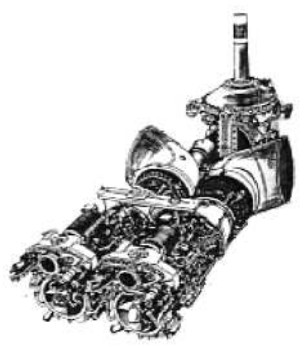
“TV2-117 Coupled”
-The version -117TG is interesting because it can consume many types of fuels apart from the typical kerosene.
-It is therefore a multi-fuel engine that admits gasoline, gas-oil, benzine, liquefied gas, oil, propane, even butane.
-This multi-fuel property is good for attack machines that can enter enemy terrain and use whatever is found.
-Certain armored tanks also use multi-fuel engines, (for example RR has had a variable compression engine, the K-5, multi-fuel) and most of these vehicles are now powered by multi-fuel turbines.
-As we see by the rear mast in the above illustration, it is installed on attack helicopters that have to enter hostile territory.
-In the TV3-117, note the number -117, which belongs to the GAZ 117 factory of former Leningrad, today St. Petersburg.
-It is a 2nd generation turboshaft, with versions -BK, -MT, -V, -VK and -VM, for use on Kamov Ka-25, 27, 32 and 50, as well as on Mi-8 and Mi -17 delivering 2,000/2,500 CV nominal to the shaft, varying according to the version.
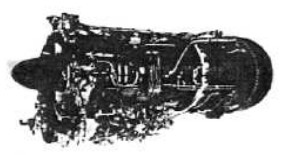
“TV3-”
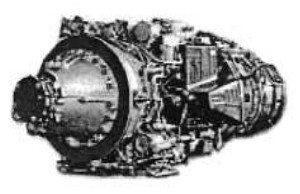
“TV7-”
-The TV7-117, designed by Sarkisov, is a turboprop with 2,500 CV to the shaft. In the below illustration of this engine the gearbox is protected by a cover.
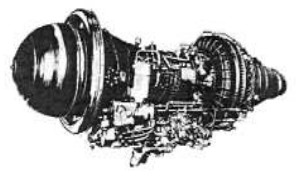
“TV7”
-There are the -S, the -S series 2, -E, -M and -V.
-The TV7-117V is also known as VK-3000 at the factory.
-The TVA-3000 is the turbine assigned to the Mi-38 with 2,500 CV.
-The small GTD-350P turbine, designed by Isotov, is now in the Klimov orbit.
-The first one was built in 1966 and until recently 20,000 engines have been manufactured. It gave 450 CV nominal.
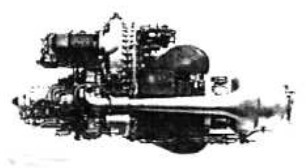
“GTD-350”
-It has the similarity of the Allison 250 that we already discussed in the chapter of Isotov.
-These engines were also made by PZL.
-The VK (Vladimir Klimov) -800 engines are turboprops (-S) or turboshafts (-V), giving about 800 CV output to the shaft, for light aircraft and helicopters.

“VK-800, drawing”
-The most powerful VK-1500, VK-2500 and VK-3500 are similar to each other but each of its own size.
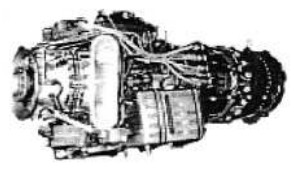
“VK-1500”
-The output is adaptable by means of high or low gearboxes with respect to the central engine shaft.
-The GTP-0.5 is an APU device based on the VK-800.
-There is the GTD-1250 series, with variants -1000T and -1000TF.
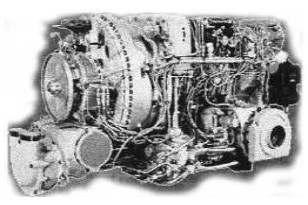
“GTD-1250”
-They are turbines from the Klimov factory for land vehicles, such as tanks, special platforms or large trucks. It is considered the best in the world of its class.
-It can be used as a turbine to drive electricity generators, pumps, compressors, fans and to dry buildings under construction, filled with snow for example, pointing the exhaust gases properly.
-The same to clear roads and railways. This idea of using the turbines for other causes was already read by the author in the 1960's when Bristol applied a turbine in a vehicle pointing to a burning building in order to displace oxygen and extinguish the fire.
-We finish this chapter with the engines that resulted from collaboration with Pratt & Whitney, such as the PK-6A (Klimov RK-6A engines, based on the PT-6), or the PK-100 based on the PW-127A.
-And the PK-206 and 207 that were derived from PW-200 family models.
From Appendix 6: After the piston engines, the turbines start at OKB Klimov on the basis of Rolls-Royce Nene and Derwent 5.
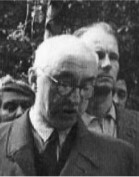
“V.J. Klimov”
-In 1948 the RD-45, RD-500 and VK-1A are already produced in GAZ #45 and GAZ #500.

“RD-45”
-They started to build the VK-1 at GAZ #45 towards 1949, then at #500, at #26, at #24 and #16.
-The following year (1950) they began to be built in significant quantities due to the Korean War, and mounting them on the MiG-15.
-The previous factories intervene plus GAZ#478.
-These engines evolve, with the RD-45F, VK-1F, VK-3 and VK-5 and -5F with afterburner.
-As the German Junkers Jumo-004 were also available, these would give way to the RD-10 and the concept of an axial compressor engine. This was the base for the important Klimov engines that would follow.
-Even the famous RD-33 on the MiG-29 plane. But few people know its starter, which is a turbine also, the GTDE-117.
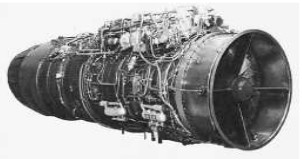

“RD-33 and GTDE-117”
-In the current Klimov TV3-117 factory they still make variants of this engine that started around 1972.
-These engines are for helicopters such as the Mi-17 and -24 or the Ka-32 and -50.
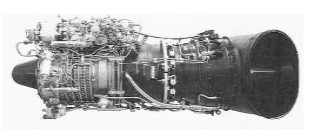
“TV3-117”
-The TV7-117 is a turboprop, which in its C and CM versions are mounted on the Tu-110, - 112 and -114.
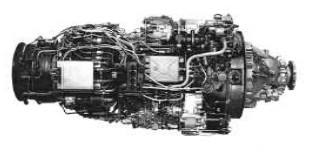
“Klimov TV7-117”
-The turboshaft version of the current TV7-117 is the C, it powers the Mi-38.
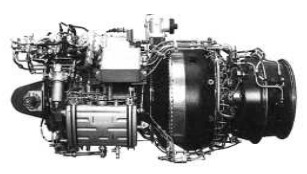
“Klimov TV7-117C”
-Another turboshaft for helicopters is the VK-1500V, for the Mi-8T.
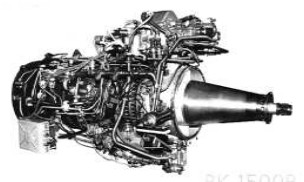
“Klimov VK-1500V turboshaft”
-It is based on the previous the VK-1500 turboprop version that has been mounted on the An-3 and An-38.
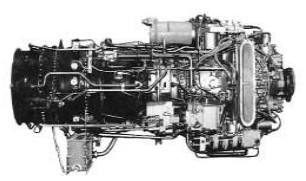
“VK-1500”
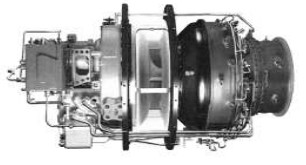
“VK-800V for the Mi-54, Ka-126 and -226”
-Klimov adapts its TV-2, TV-3 or GTD-1250 aerial engines for marine and land vehicles like the latter on T-80 tanks.
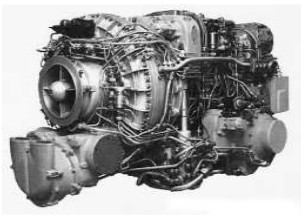
“GTD-1250”
-Finally, this extension is closed with the TS-21 turbine starter engine for the RD-35 main engine.
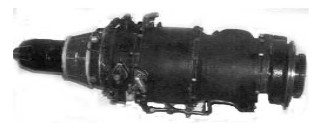
“TS-21 starter engine”
-They are derived from the RD-33, RD-43, RD-93. RD-133 and RD-333. There also was the SMR-95 for the South African Mirage.
-We provide complementary information for the main text.
-Also for the Samara-Trud chapter. (ver).
-The NK-4, -12, -16, -20, -26, -62, -123, -28, TV-022, TV-2 turboprop and turboshaft engines are made (or have been made).
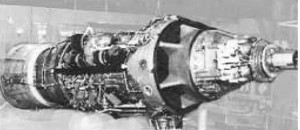
“Kuznetsov-Samara, NK-12”
-The following turbojets: NK-6, -7, -8, -22, -23, -25, -32, -34, -44, -46, -56, -64, -86, -87, -88, - 89, -92, -93, -94, -104, -112, -114, -144, -321.
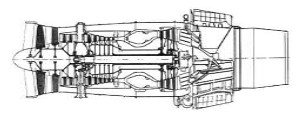

“Schematic diagram and cutaway for the NK-8-4”
-The NK-62, -63, -108, -110 turbofans.
-The NK-5, -9, -15, -19, -21, -31, -33, -39, -43, -45 rocket engines.
-Light piston engines, NK-P-020, -P032, etc (see main text).
-The NK-14 nuclear engine.
-Below we show a cross-section for the -89 that runs on LNG (Liquefied Natural Gas).
-The NK-88 and -89 versions were made for tests with LNG and liquid hydrogen. So they were experimental.

“NK-88 and/or NK-89”
-And also industrial versions of the previous ones such as NK-12, -14, -16, -17, -18, -36, -37, -38, -39, -40, -41 and -91.

“Kuznetsov NK-144 for the Tu-144”
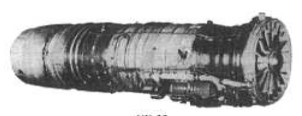
“NK-22”
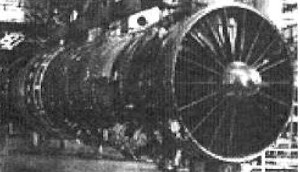
“Kuznetsov-Samara NK-25”
-The RD-36, NK-144, NK-22, NK-25 and NK-321 are considered from the same family.
-The powers are between 13/14000 Kgf dry thrust and 20/25000 Kgf with the afterburner running, depending on the models.
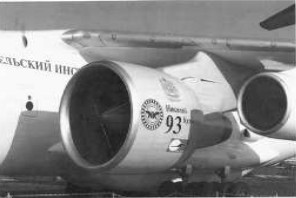
“NK-93 in flight tests”
-The NK-93 replaces a normal aircraft engine for flight tests. (See Kazan KMPO, Aviamotor KPP, Samara).
-Without a doubt it is a Leader in manufacturing engines for airplanes and helicopters.
-And in recent times they are installed on the Mig-29, Mi-24, and even the T-80 tank.

“Klimov logo”
-By the main text we know about Klimov's collaboration with Isotov at OKB-117.
-And also from Klimov's beginnings in 1912 in St. Petersburg as The Russian Renault Joint Stock Company for cars of that brand.
-It was in 1933 when he began to work on the HS-12Y and later on his own developments that were of capital importance in WWII. (see the Klimov M-105, e.g.).
-When the era of jet aviation arrived, they made the VK-1 based on the RR Nene, to enhance the MiG-15, MiG-17, Il-28, Tu-11, etc.
-Then the GTD-350, TV2 and TV3 engines that would power several helicopters from the 1960-70s. Together with their gearboxes.
-Lately the RD-33 for the MiG-29.
-There was a collaboration with Motor Sich after the division of the USSR (see).
- Curiously, in 1994 they made the SMR-95 to install on French Mirage F1 planes and exported to other countries, improving the performances of the Atar 9K-50.
-Since 1997, the TV7-117 has been revised and undergoes improvements at Klimov, just like the RD-33.

“Klimov's VK-1500”
-In 1944 the engineers at the Klimov OKB only had information from England, magazine photographs, some detail and little more. With this they worked on the NIN-1 engine until in 1946 they were able to acquire whole new engines from Rolls-Royce.
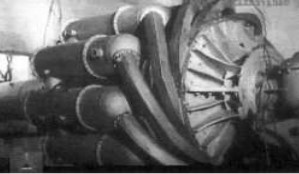
“Whittle based engine”
-Later, engines, materials and technicians from defeated Germany arrived.
-Undoubtedly the first successful turbojet was the VK-1 that was mounted on the MiG-15, an airplane that, according to the Russians, (and in good part of the author) had air superiority in most of the Korean war.
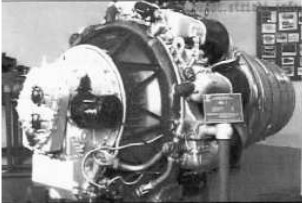
“The VK-1, Nene based but with more flow”
From Appendix 9: Nice and recent photograph of a TD-350. The resemblance to the Allison 250 is extraordinary.
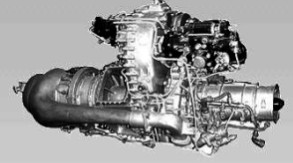
“Klimov TD-350”
-The TD-350 turbine model appears in the main text as GTD-350.
-A test with piston engines from Klimov. The compressor and burner assembly mechanism used by the VK-107A engine is clearly seen below.
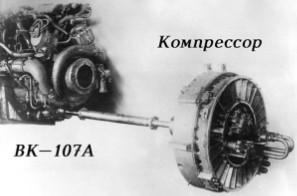
“Fan drag”
-If it were not because the plane in which it is installed has its own propeller, it would be a motorjet. Although in a way it is. The plane was a MiG I-250.
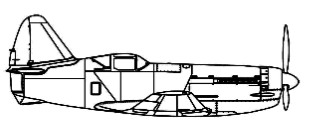
“El I-250”
-Because of increase of weight and a little increase of performances, in addition to an enormous fuel consumption, the system did not pass the test stage.
From Appendix 12: The Russian Bolkhovitivov S2M103 aircraft was powered by two tandem-mounted Klimov M-103 engines, and as it seems, they ran independently. Both drove their own contra-rotating propeller.
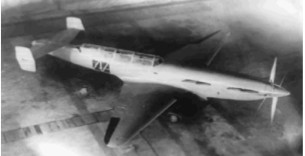
“The mentioned plane”

“Engine assembly diagram, 2 x M-103”
Engines of KLIMOV
Model: 15D13 (y 11D423)
Arquitecture:
Compressor/s:
Combustion chambers:
Turbines:
Power / Thrust: / ---
Weight:
Model: GTD-1250
Arquitecture:
Compressor/s:
Combustion chambers:
Turbines:
Power / Thrust: / ---
Weight:
Model: GTD-350
Arquitecture:
Compressor/s:
Combustion chambers:
Turbines:
Power / Thrust: / ---
Weight:
Model: M-100
Arquitecture:
Cooling:
Total Displacement:
Bore / Stroke: x
Power:
Weight:
Model: M-103
Arquitecture:
Cooling:
Total Displacement:
Bore / Stroke: x
Power:
Weight:
Model: M-105
Arquitecture:
Cooling:
Total Displacement:
Bore / Stroke: x
Power:
Weight:
Model: M-120
Arquitecture:
Cooling:
Total Displacement:
Bore / Stroke: x
Power:
Weight:
Model: RD-133
Arquitecture:
Compressor/s:
Combustion chambers:
Turbines:
Power / Thrust: / ---
Weight:
Model: RD-33
Arquitecture:
Compressor/s:
Combustion chambers:
Turbines:
Power / Thrust: / ---
Weight:
Model: RD-333
Arquitecture:
Compressor/s:
Combustion chambers:
Turbines:
Power / Thrust: / ---
Weight:
Model: RD-35
Arquitecture:
Compressor/s:
Combustion chambers:
Turbines:
Power / Thrust: / ---
Weight:
Model: RD-43 (VKS-5)
Arquitecture:
Compressor/s:
Combustion chambers:
Turbines:
Power / Thrust: / ---
Weight:
Model: RD-45
Arquitecture:
Compressor/s:
Combustion chambers:
Turbines:
Power / Thrust: / ---
Weight:
Model: RD-500
Arquitecture:
Compressor/s:
Combustion chambers:
Turbines:
Power / Thrust: / ---
Weight:
Model: RD-60
Arquitecture:
Compressor/s:
Combustion chambers:
Turbines:
Power / Thrust: / ---
Weight:
Model: RD-93
Arquitecture:
Compressor/s:
Combustion chambers:
Turbines:
Power / Thrust: / ---
Weight:
Model: RK-6A
Arquitecture:
Compressor/s:
Combustion chambers:
Turbines:
Power / Thrust: / ---
Weight:
Model: SMR-95
Arquitecture:
Compressor/s:
Combustion chambers:
Turbines:
Power / Thrust: / ---
Weight:
Model: TS-21
Arquitecture:
Compressor/s:
Combustion chambers:
Turbines:
Power / Thrust: / ---
Weight:
Model: TV2-117
Arquitecture:
Compressor/s:
Combustion chambers:
Turbines:
Power / Thrust: / ---
Weight:
Model: TV3-117
Arquitecture:
Compressor/s:
Combustion chambers:
Turbines:
Power / Thrust: / ---
Weight:
Model: TV7-117
Arquitecture:
Compressor/s:
Combustion chambers:
Turbines:
Power / Thrust: / ---
Weight:
Model: TVA-3000
Arquitecture:
Compressor/s:
Combustion chambers:
Turbines:
Power / Thrust: / ---
Weight:
Model: VK-1, -1A
Arquitecture:
Compressor/s:
Combustion chambers:
Turbines:
Power / Thrust: / ---
Weight:
Model: VK-106
Arquitecture:
Cooling:
Total Displacement:
Bore / Stroke: x
Power:
Weight:
Model: VK-107
Arquitecture:
Cooling:
Total Displacement:
Bore / Stroke: x
Power:
Weight:
Model: VK-107A (mixto)
Arquitecture:
Cooling:
Total Displacement:
Bore / Stroke: x
Power:
Weight:
Model: VK-1500
Arquitecture:
Compressor/s:
Combustion chambers:
Turbines:
Power / Thrust: / ---
Weight:
Model: VK-2
Arquitecture:
Compressor/s:
Combustion chambers:
Turbines:
Power / Thrust: / ---
Weight:
Model: VK-2500
Arquitecture:
Compressor/s:
Combustion chambers:
Turbines:
Power / Thrust: / ---
Weight:
Model: VK-3
Arquitecture:
Compressor/s:
Combustion chambers:
Turbines:
Power / Thrust: / ---
Weight:
Model: VK-3500
Arquitecture:
Compressor/s:
Combustion chambers:
Turbines:
Power / Thrust: / ---
Weight:
Model: VK-5
Arquitecture:
Compressor/s:
Combustion chambers:
Turbines:
Power / Thrust: / ---
Weight:
Model: VK-800
Arquitecture:
Compressor/s:
Combustion chambers:
Turbines:
Power / Thrust: / ---
Weight:
Model: VKS-10
Arquitecture:
Compressor/s:
Combustion chambers:
Turbines:
Power / Thrust: / ---
Weight:


